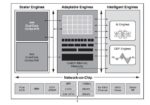You are currently viewing SemiWiki as a guest which gives you limited access to the site. To view blog comments and experience other SemiWiki features you must be a registered member. Registration is fast, simple, and absolutely free so please,
join our community today!
WP_Term Object
(
[term_id] => 15
[name] => Cadence
[slug] => cadence
[term_group] => 0
[term_taxonomy_id] => 15
[taxonomy] => category
[description] =>
[parent] => 157
[count] => 572
[filter] => raw
[cat_ID] => 15
[category_count] => 572
[category_description] =>
[cat_name] => Cadence
[category_nicename] => cadence
[category_parent] => 157
[is_post] =>
)

WP_Term Object
(
[term_id] => 15
[name] => Cadence
[slug] => cadence
[term_group] => 0
[term_taxonomy_id] => 15
[taxonomy] => category
[description] =>
[parent] => 157
[count] => 572
[filter] => raw
[cat_ID] => 15
[category_count] => 572
[category_description] =>
[cat_name] => Cadence
[category_nicename] => cadence
[category_parent] => 157
[is_post] =>
)
Introduction
Frequent SemiWiki readers are aware of the growing significance of heterogeneous multi-die packaging technologies, offering a unique opportunity to optimize system-level architectures and implementations. The system performance, power dissipation, and area/volume (PPA/V) characteristics of a multi-die… Read More
A processor ISA provides an abstraction against which to verify an implementation. We look here at a paper extending this concept to accelerators, for verification of how these interact with processors and software. Paul Cunningham (GM, Verification at Cadence), Raúl Camposano (Silicon Catalyst, entrepreneur, former Synopsys… Read More
As processor architecture and design development becomes completely liberated with open-source RISC-V instruction set architecture (ISA), the race to get RISC-V silicon in our hands has increased massively. We have no doubt that in next 5 years, we will see RISC-V based laptops and desktops in the market. But would these processors… Read More
Roots of trust can’t prevent attacks through side-channels which monitor total power consumption or execution timing. Correcting weakness to such attacks requires pre-silicon vulnerability analysis. Paul Cunningham (GM, Verification at Cadence), Raúl Camposano (Silicon Catalyst, entrepreneur, former Synopsys CTO)… Read More
Cadence invests heavily in the development of their Tempus Timing Signoff Solution due to its importance in the SoC design flow. I recently had a discussion on the topic of the most recent Tempus update with Brandon Bautz, senior product management group director in the Digital & Signoff Group, and Hitendra Divecha, product… Read More
Electronic design automation (EDA) has come a long way from its beginnings. It has enabled chip engineers from specifying designs directly in layout format during the early days to today’s capture in RTL format. Every advance in EDA has made the task of designing a chip easier and increased the design team productivity, enabling… Read More
Instrumenting post-silicon validation is not a new idea but here’s a twist. Using (pre-silicon) emulation to choose debug observation structures to instrument in-silicon. Paul Cunningham (GM, Verification at Cadence), Raúl Camposano (Silicon Catalyst, entrepreneur, former Synopsys CTO) and I continue our series on research… Read More
EDA Flows for 3D Die Integrationby Tom Dillinger on 07-20-2021 at 6:00 amCategories: Cadence, EDA, Events
Background
The emergence of 2.5D heterogeneous die integration using a silicon (or organic) interposer has enabled unique system architectures. The term “More than Moore” has been used to describe the circuit density and cost advantages of leveraging multiple die in the package, the die potentially in different process technologies. … Read More
Leveraging neural nets and CR testing isn’t as simple as we first thought. But is that the last word in combining these two techniques? Paul Cunningham (GM, Verification at Cadence), Raúl Camposano (Silicon Catalyst, entrepreneur, former Synopsys CTO) and I continue our series on research ideas. As always, feedback welcome.… Read More
One of the most unique acronyms that I learned about this past year is ACAP from Xilinx, which stands for Adaptive Compute Acceleration Platform. At the recent Cadence LIVE event, I had the pleasure of watching Pei Yao, a Xilinx senior staff CAD engineer, as she talked about the challenges of getting all the analog and mixed-signals… Read More











